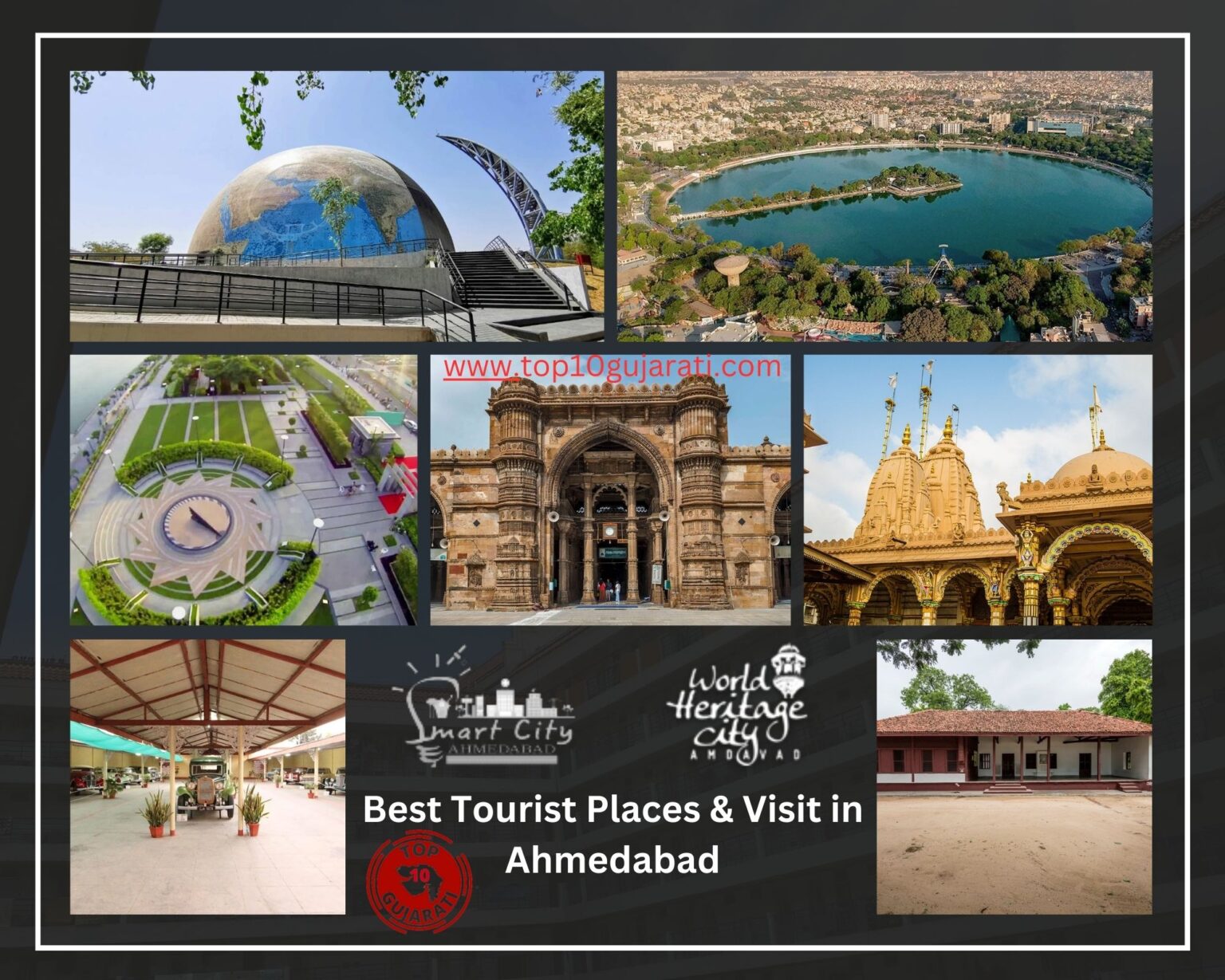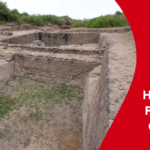1.Sabarmati Ashram:
The Sabarmati Ashram, also known as Gandhi Ashram, stands as a testament to the indomitable spirit of Mahatma Gandhi and his philosophy of nonviolent resistance. Nestled on the tranquil banks of the Sabarmati River in Ahmedabad, Gujarat, this historical site holds deep significance in India’s struggle for independence and continues to inspire generations with its enduring message of truth and nonviolence.
Historical Significance
Founded in 1915 by Mahatma Gandhi, the ashram served as his residence and the epicenter of his various movements for social, economic, and political reforms. From here, he led campaigns against injustices such as untouchability, poverty, and British colonial rule.
Philosophy of Simplicity
The ashram embodied the principles of simplicity, self-sufficiency, and communal living. Gandhi, a proponent of leading by example, practiced what he preached by engaging in manual labor, spinning his own cloth, and advocating for sustainable living.
Dandi March – The Salt Satyagraha
One of the most iconic events associated with the ashram was the Dandi March (also known as the Salt March) in 1930. Gandhi, along with a group of followers, embarked on a 240-mile journey to the Arabian Sea to protest the British monopoly on salt production. This symbolic act of defiance galvanized the nation and played a pivotal role in India’s struggle for freedom.
Legacy and Influence
The Sabarmati Ashram played a central role in shaping the course of India’s history. It was a space for discussions, debates, and decisions that influenced the direction of the freedom movement. The ashram’s emphasis on self-reliance, community service, and nonviolence has left an indelible mark on India’s socio-political landscape.
Ashram Complex
The ashram complex houses various buildings, including Gandhi’s living quarters, a prayer ground, a spinning wheel (charkha) room, a guest house, a library, and a museum. The museum preserves and exhibits items related to Gandhi’s life, his personal belongings, and photographs that provide insights into his journey.
Visitor Experience
Visitors to the Sabarmati Ashram can explore the serene surroundings, walk in Gandhi’s footsteps, and experience the deep connection he had with nature. The museum offers a poignant look into his life and work, inspiring visitors to reflect on the enduring values of truth, simplicity, and nonviolence.
The Sabarmati Ashram remains a place of pilgrimage for those seeking to understand Mahatma Gandhi’s philosophy and its relevance in the present world. It stands as a living tribute to his unwavering commitment to social justice, equality, and freedom, serving as a source of inspiration for individuals striving for positive change.
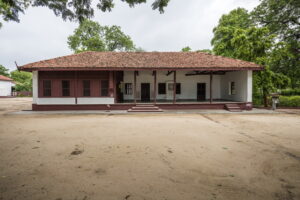
2. Jama Masjid :
The Jama Masjid, a masterpiece of Islamic architecture, graces the heart of Ahmedabad with its grandeur and historical significance. Built during the 15th century under the patronage of Sultan Ahmed Shah I, this iconic mosque stands as a testament to the city’s rich heritage and its Islamic roots.
Historical Significance:
Constructed in 1423, the Jama Masjid predates the founding of the city itself. It was commissioned by Sultan Ahmed Shah I, the founder of Ahmedabad, as a place of congregational worship for the city’s growing Muslim community. The mosque’s name “Jama” signifies a place of Friday congregational prayers (Jumu’ah).The Jama Masjid showcases the exquisite blend of Indo-Islamic architecture, characterized by a fusion of Islamic elements with local craftsmanship. Its design incorporates intricately carved sandstone, domes, minarets, and geometric patterns that reflect the aesthetic sensibilities of the era. The mosque’s façade is adorned with ornate minarets and grand entrances that lead to a spacious courtyard. The central prayer hall, bordered by a colonnade of pillars and arches, can accommodate a large congregation. The mihrab (prayer niche) faces the direction of Mecca and is adorned with intricate decoration. One of the most captivating features of the Jama Masjid is its intricate stone lattice work, particularly the world-renowned “Sidi Saiyyed Jali.” This delicately carved window showcases an intricate network of interlocking patterns that demonstrate the exceptional craftsmanship of the artisans. The Jama Masjid stands as an enduring symbol of Ahmedabad’s cultural heritage, reflecting the city’s historical connection to trade, art, and spirituality. It remains an important place of worship for the Muslim community and a significant landmark that resonates with both locals and visitors.
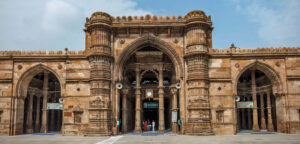
3. Sidi Saiyyed Mosque:
The Sidi Saiyyed Mosque, located in the heart of Ahmedabad, is celebrated worldwide for its exquisite stone lattice work, known as the “Sidi Saiyyed Jali.” This mosque stands as a shining example of architectural brilliance and artistic craftsmanship, capturing the essence of Islamic art in its delicate stone carvings. Built in 1573 during the reign of Sultan Ahmed Shah, the Sidi Saiyyed Mosque holds a significant place in Ahmedabad’s history. It was constructed by Sidi Saiyyed, an Abyssinian nobleman in the court of Sultan Ahmed Shah, which is how the mosque derived its name. The crowning jewel of the Sidi Saiyyed Mosque is the intricately carved stone lattice work that graces its windows. The “Sidi Saiyyed Jali” is a mesmerizing creation featuring an interlocking network of geometrical designs, floral patterns, and intricately intertwined vines. It is considered a pinnacle of Indo-Islamic architectural ornamentation. The most famous of these carved windows is the “Tree of Life,” a depiction of a tree with intertwining branches and delicate leaves, creating a visual spectacle that transcends time and culture. This intricate stone jali has become an iconic symbol of Ahmedabad’s architectural heritage. The Sidi Saiyyed Jali isn’t just an architectural marvel; it carries symbolism and meaning. The intricate patterns not only showcase the artisans’ skills but also reflect the mathematical precision and geometric harmony often found in Islamic art. The delicate stone lattice serves as a screen, allowing filtered light and air while maintaining privacy. The Sidi Saiyyed Mosque stands as a testament to the cross-cultural influences and architectural achievements that have shaped Ahmedabad’s identity. It is a vivid reminder of the city’s rich history and its role as a hub of artistic and cultural exchange.
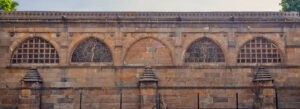
4. Kankaria Lake:
Nestled in the heart of Ahmedabad, Kankaria Lake is a picturesque oasis that offers a blend of natural beauty and recreational delights. Spanning over 34 acres, this historic lake has evolved from a medieval reservoir to a modern-day hotspot, making it a beloved destination for both locals and tourists seeking a respite from the bustling city. Built in the 15th century by Sultan Qutb-ud-Din, Kankaria Lake was initially designed to fulfill the city’s water needs. Over time, it transformed into a multi-faceted space, reflecting the evolving needs and aspirations of the city. Today, Kankaria Lake is a hub of leisure and recreation, drawing visitors with its diverse offerings:

1. Zoo The Kamla Nehru Zoo, located on the lake’s southeastern edge, is home to a variety of animals and birds. It’s a place where families and wildlife enthusiasts can connect with nature.
2. Amusement Park The Kankaria Adventure Park features thrilling rides, including a roller coaster and other attractions that offer excitement for visitors of all ages.
3. Toy Train The lake’s periphery offers a toy train that takes visitors on a scenic ride around the lake, providing a unique perspective of the surroundings.
4. Boating Pedal boats and rowboats are available for those looking to explore the tranquil waters and enjoy a leisurely boating experience.
5. Evening Light and Sound Show The lake comes alive after sunset with a captivating light and sound show that narrates the history and heritage of Ahmedabad.
6. Jogging and Walking The well-maintained pathways around the lake provide a serene space for joggers, walkers, and those seeking a peaceful stroll.
Kankaria Lake has undergone significant revitalization, transforming it into a symbol of urban development and community engagement. The lakefront project, initiated in the early 2000s, focused on enhancing the lake’s infrastructure, recreational amenities, and overall aesthetics.
Cultural Events and Festivals
The lake serves as a venue for cultural events, exhibitions, and festivals, further adding to its vibrant atmosphere. During festivals like Navratri and Diwali, Kankaria Lake becomes a canvas for colorful celebrations and illuminated displays.
Beyond its recreational significance, Kankaria Lake also plays a role in water conservation and as a habitat for various bird species.
Kankaria Lake seamlessly blends natural beauty, historical legacy, and modern amenities, making it an epitome of Ahmedabad’s progress while preserving its cultural roots. Whether you’re seeking relaxation, entertainment, or a glimpse into the city’s history, Kankaria Lake offers an enchanting experience for all.
5. Calico Museum of Textiles:
Immerse yourself in the vibrant world of India’s textiles at the Calico Museum of Textiles. Founded in 1949 by the Sarabhai family, this museum is a treasure trove of exquisite fabrics, garments, and artifacts that showcase India’s rich textile traditions. The museum’s inception was driven by a passion for preserving India’s artistic legacy. Its name “Calico” pays homage to the intricately patterned cotton cloth that has been part of India’s textile heritage for centuries. The museum’s galleries offer a journey through the evolution of textiles, from ancient to contemporary. Each exhibit tells a story of craftsmanship, cultural diversity, and the interplay of art and tradition. The Calico Museum goes beyond showcasing textiles; it provides educational insights into the historical, social, and artistic contexts that shaped these textiles, making it a space for learning and cultural appreciation.
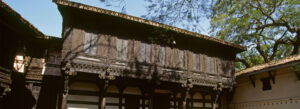
6. Sarkhej Roza:
Sarkhej Roza, an architectural marvel located on Ahmedabad’s outskirts, transcends time with its fusion of Islamic, Hindu, and Jain architectural elements. Built during the 15th century, Sarkhej Roza served as a spiritual retreat for Sufi saint Shaikh Ahmed Khattu Ganj Baksh. It was also a center for scholarly and cultural exchanges. Sarkhej Roza’s intricate carvings, jaali work, and ornate details showcase a fusion of Indo-Islamic, Persian, and local Gujarat architectural styles. The complex embodies cultural harmony, blending religious motifs from different faiths. Its architecture stands as a testament to Ahmedabad’s multicultural heritage.
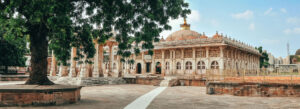
7. Science City: Where Learning is an Adventure
Ahmedabad’s Science City merges education with entertainment, offering a captivating experience for curious minds. Science City’s interactive exhibits engage visitors with scientific principles and phenomena in exciting ways.
Planetarium and IMAX Theater
The planetarium and IMAX theater provide cosmic and cinematic journeys, igniting a passion for science and exploration.

Awe and Discovery
Innovation is at the heart of Science City. Its exhibits inspire curiosity and critical thinking, fostering a love for learning.
8. Law Garden Market:
Law Garden Market is more than just a marketplace; it’s a cultural experience where traditional handicrafts, textiles, and local flavors come alive. Explore stalls brimming with Gujarati handicrafts, textiles, jewelry, and more. It’s a paradise for those seeking unique souvenirs. Indulge in local cuisine and street food, savoring the flavors of Ahmedabad as you explore the vibrant market atmosphere. Law Garden Market captures the essence of local culture. The hustle, bustle, and local artisans create an authentic and immersive experience.
9. Auto World Vintage Car Museum: A Journey Through Time
Step into the past at the Auto World Vintage Car Museum, where classic automobiles narrate stories of bygone eras. The museum houses a collection of vintage cars that showcase the evolution of automotive engineering and design. Each car carries a unique history, connecting visitors to different periods and capturing the essence of their time. The museum’s commitment to preserving automotive heritage offers a window into the elegance and innovation of the past.
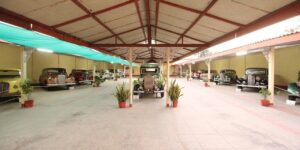
10. Hathisingh Jain Temple:
The Hathisingh Jain Temple, built in the 19th century by Sheth Hathisingh, is an architectural gem that exemplifies Jain values and artistic finesse. The temple’s marble craftsmanship, intricate designs, and ornate detailing make it a masterpiece of Jain architecture. Visitors can experience a sense of calm and spirituality as they admire the temple’s serene surroundings and elegant beauty. The Hathisingh Jain Temple carries forward the traditions and devotion of the Jain community, contributing to Ahmedabad’s cultural mosaic.
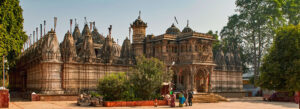
11. Shree Swaminarayan Mandir Kalupur:
Shree Swaminarayan Mandir Kalupur is a spiritual sanctuary that welcomes devotees to experience tranquility and devotion. The temple was established by Lord Swaminarayan, the founder of the Swaminarayan Sampradaya, with the aim of promoting spiritual values. The temple’s architecture showcases the intricacies of Swaminarayan craftsmanship, reflecting the sect’s reverence for art and spirituality. The temple not only serves as a place of worship but also fosters a sense of community and spiritual connection among devotees.

12. Dada Harir Vav, Asarwa: An Architectural Jewel
Dada Harir Vav is an ancient stepwell and temple complex that stands as a testament to architectural prowess and community heritage. Constructed in the 15th century by Bai Harir, a noblewoman, the stepwell served as a water source and a place of worship. The stepwell’s intricate carvings, unique architecture, and underground chambers make it a marvel of engineering and art. Dada Harir Vav served as a communal gathering place, fostering connections among locals and adding vibrancy to everyday life.
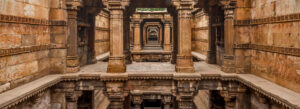
13. Mata Bhawani Ni Vav & Temple: A Blend of Architecture and Devotion
Mata Bhawani Ni Vav & Temple is a historical stepwell and temple complex that blends architectural beauty with spiritual reverence. Dedicated to Goddess Matar Bhawani, the stepwell and temple hold religious importance and serve as places of worship. The complex’s architectural features, intricate carvings, and serene ambiance reflect the harmony of art and spirituality. Mata Bhawani Ni Vav & Temple is a testament to the cultural heritage that has been preserved through generations, connecting the past with the present.
14. Amritavarshini Vav, Panchkuva:
Amritavarshini Vav in Panchkuva is a hidden architectural gem that showcases Ahmedabad’s ancient water management systems. The stepwell’s unique design, intricate carvings, and functional chambers exemplify the city’s historical water conservation practices. Stepwells like Amritavarshini Vav were not only sources of water but also served as social hubs and community meeting places. Exploring Amritavarshini Vav offers insights into the city’s historical significance and the engineering prowess of bygone eras.
15. ISKCON Temple:
The ISKCON Temple in Ahmedabad is a spiritual oasis dedicated to Lord Krishna and a haven for devotees seeking transcendence. The temple’s serene ambiance, devotional practices, and spiritual teachings create an environment of peace and introspection. The ISKCON Temple is a symbol of the Hare Krishna movement’s influence, promoting devotion, compassion, and spiritual understanding. The temple not only provides a space for individual worship but also fosters a sense of community, service, and shared spiritual journey.
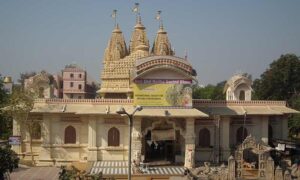
16. Sabarmati Riverfront: Urban Renewal and Serenity
The Sabarmati Riverfront project transformed the riverbanks into a lively urban space, offering tranquility, recreation, and a renewed connection to the city’s lifeline. The project reimagined the riverfront, revitalizing the area and creating a public space for leisure, cultural events, and social interaction. The riverfront’s well-designed promenade, gardens, and open spaces provide a picturesque setting for relaxation and leisure activities. The Sabarmati Riverfront brings communities together through its various facilities, encouraging outdoor activities and cultural events.

17. Open Air Theater (Drive-in Cinema):
The Open Air Theater, or drive-in cinema, is a nostalgic entertainment experience that combines cinematic magic with outdoor ambiance. The drive-in cinema culture harks back to a bygone era, offering a unique way to enjoy films under the open sky. Visitors can watch movies from the comfort of their cars, relishing the experience of cinema while enjoying the pleasant evenings.
18. Bhadra Fort: A Historical Citadel
Bhadra Fort, built by Sultan Ahmad Shah in 1411, stands as a historical citadel that embodies Ahmedabad’s rich heritage and historical importance. The fort’s architecture showcases the medieval Islamic style, featuring grand gates, walls, and structures that reflect the era’s grandeur. Bhadra Fort served as a royal palace, administrative center, and defense structure during different periods of history. The fort symbolizes Ahmedabad’s historical significance as well as its architectural and cultural contributions to the region.
19. Atal Bridge
The Atal Bridge in Ahmedabad, officially known as the Atal Setu, is a significant infrastructure project that stands as a symbol of connectivity and urban development. Named in honor of India’s former Prime Minister, Atal Bihari Vajpayee, this bridge has played a pivotal role in improving the city’s transportation network and easing traffic congestion.

The Atal Bridge is a cable-stayed bridge that spans across the Sabarmati River, connecting the eastern and western parts of Ahmedabad. It’s a four-lane bridge with two separate carriageways for each direction of traffic flow. The bridge’s design incorporates aesthetic and functional elements, making it an architectural landmark as well. One of the primary objectives behind the construction of the Atal Bridge was to improve connectivity between the eastern and western parts of the city. The bridge significantly reduces travel time and congestion, benefiting both daily commuters and the overall transportation infrastructure of Ahmedabad.

